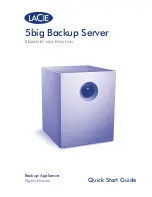
Series AFS8202M
Alba Fiber Systems Inc. Specifications are subject to change without notice.
Page 62 6/20/14
www.albafiber.net
Industrial Redundant Managed Ethernet Media Converter with 2 Ports
1 x 10/100/1000BaseT(X) Port, 1 x 1000M SFP Port
Unaware)
■
C-port
–
For customer ports, each frame is assigned to the VLAN indicated in the VLAN tag,
and the tag is removed.
■
S-port
–
For service ports, the EtherType of all received frames is changed to 0x88a8 to
indicate that double-tagged frames are being forwarded across the switch. The switch will pass
these frames on to the VLAN indicated in the outer tag. It will not strip the outer tag, nor change
any components of the tag other than the EtherType field.
■
S-custom-port
–
For custom service ports, the EtherType of all received frames is changed
to value set in the Ethertype for Custom S-ports field to indicate that double-tagged frames are
being forwarded across the switch. The switch will pass these frames on to the VLAN indicated in
the outer tag. It will not strip the outer tag, nor change any components of the tag other than
the EtherType field.
■
Unaware
–
All frames are classified to the Port VLAN ID and tags are not removed.
◆
Ingress Filtering - Determines how to process frames tagged for VLANs for which the ingress
port is not a member. (Default: Disabled)
■
Ingress filtering only affects tagged frames.
■
If ingress filtering is enabled and a port receives frames tagged for VLANs for which it is
not a member, these frames will be discarded.
■
If ingress filtering is disabled and a port receives frames tagged for VLANs for which it is
not a member, these frames will be flooded to all other ports.
■
Ingress filtering does not affect VLAN independent BPDU frames, such as GVRP or STP.
However, they do affect VLAN dependent BPDU frames, such as GMRP.
◆
Frame Type - Sets the interface to accept all frame types, including tagged or untagged
frames, only tagged frames, or only untagged frames. When set to receive all frame types, any
received frames that are untagged are assigned to the default VLAN. When set to receive only
tagged frames, all untagged frames received on the interface are discarded. (Option: All, Tagged,
Untagged; Default: All)
◆
Port VLAN Mode - Determines how to process VLAN tags for ingress and egress traffic.
(Options: None, Specific; Default: Specific)
■
None - The ID for the VLAN to which this frame has been assigned is inserted in frames
transmitted from the port. The assigned VLAN ID can be based on the ingress tag for tagged
frames, or the default PVID for untagged ingress frames. Note that this mode is normally used
for ports connected to VLAN-aware switches.
■
Specific - A Port VLAN ID can be configured (as described below). Untagged frames
received on the port are classified to the Port VLAN ID. If Port Type is Unaware, all frames
received on the port are classified to the Port VLAN ID. If the classified VLAN ID of a frame
transmitted on the port is different from the Port VLAN ID, a VLAN tag with the classified VLAN
ID is inserted in the frame. When forwarding a frame from this switch along a path that contains
any VLAN-aware devices, the switch should include VLAN tags. When forwarding a frame from
this switch along a path that does not contain any VLAN-aware devices (including the destination
host), the switch should first strips off the VLAN tag before forwarding the frame.
◆
Port VLAN ID - VLAN ID assigned to untagged frames received on the interface. (Range: 1-











































